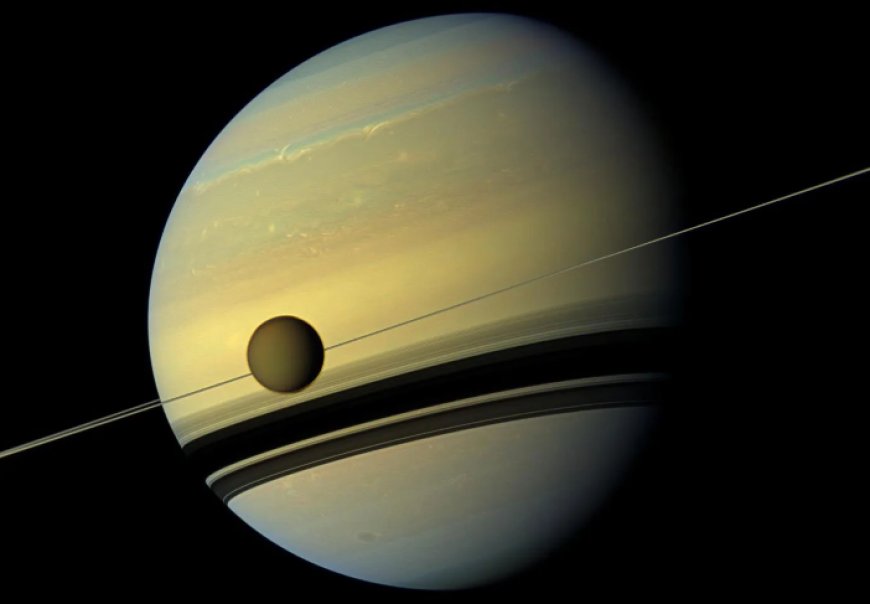What Makes Titan, Saturn’s Moon, So Similar to Earth?

By Lewis Karani,
Saturn's biggest moon, Titan, is one of the most interesting places in our solar system. Found in 1655 by a scientist named Christiaan Huygens, Titan is much larger than our moon—about 50% bigger. It’s not just its size that makes it special; Titan has some amazing features that are similar to Earth.
A Moon Full of Surprises
Titan is the second-largest moon in our solar system, even bigger than the planet Mercury! What makes Titan really unique is its thick atmosphere, which is mostly made of nitrogen. This atmosphere is so dense that you wouldn’t be able to see the surface easily from space without special equipment. Titan is the only moon we know of that has such a thick atmosphere.
Scientists are very curious about Titan because its atmosphere contains complex chemicals that are like the ones that may have started life on Earth. This has led some to wonder if there could be some form of life on Titan, deep below its icy surface.
Titan’s Earth-Like Features
What’s really cool about Titan is that it has weather, seasons, and even liquid on its surface, just like Earth! But here’s the twist: Titan’s lakes, rivers, and seas aren’t filled with water—they’re filled with liquid methane and ethane, which are types of gas on Earth. Even though Titan is extremely cold, with temperatures around -290°F (-179°C), these liquids don’t freeze.
Titan also has winds that create dunes and rain that shapes valleys and rivers, similar to how water shapes Earth. The rain on Titan isn’t water either; it’s liquid methane! Some of Titan’s lakes are bigger than the Great Lakes in North America, making it a very strange but fascinating place.
New Discoveries: Titan is Drifting Away
Scientists have recently found out that Titan is slowly moving away from Saturn, faster than they thought before. This discovery is surprising because it suggests that there are complicated forces at work between Titan and Saturn. These forces are causing Titan’s orbit to change more quickly than expected, which has given scientists new ideas about how moons and planets interact (SciTechDaily) (NASA).
The Dragonfly Mission: Exploring Titan Up Close
NASA has an exciting mission called Dragonfly planned for 2027. Dragonfly is a special spacecraft that will fly around Titan’s surface, taking pictures and doing science experiments. The mission’s goal is to learn more about Titan’s strange surface, its thick atmosphere, and whether it could possibly support some form of life.
Dragonfly will hop from place to place on Titan, studying everything from the chemicals in the atmosphere to the way Titan’s weather works. This mission will help scientists understand Titan much better and could even teach us more about how life began on Earth (SciTechDaily).
Conclusion: Titan’s Secrets Are Waiting
Titan is a place full of mysteries. Even though it’s so far away and so different from Earth, it has many things in common with our planet. With the Dragonfly mission on the way, we’re closer than ever to uncovering the secrets of this fascinating moon and maybe even answering the big question: Is there life out there in the universe?







